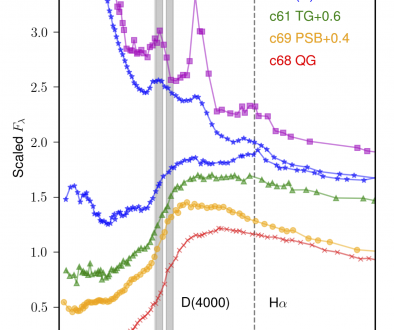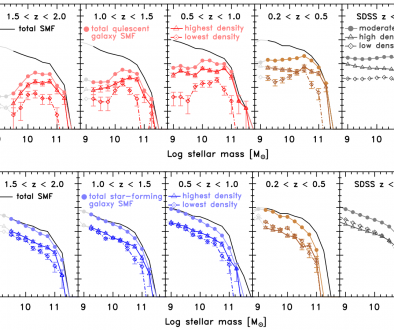Allen 2015 Summary
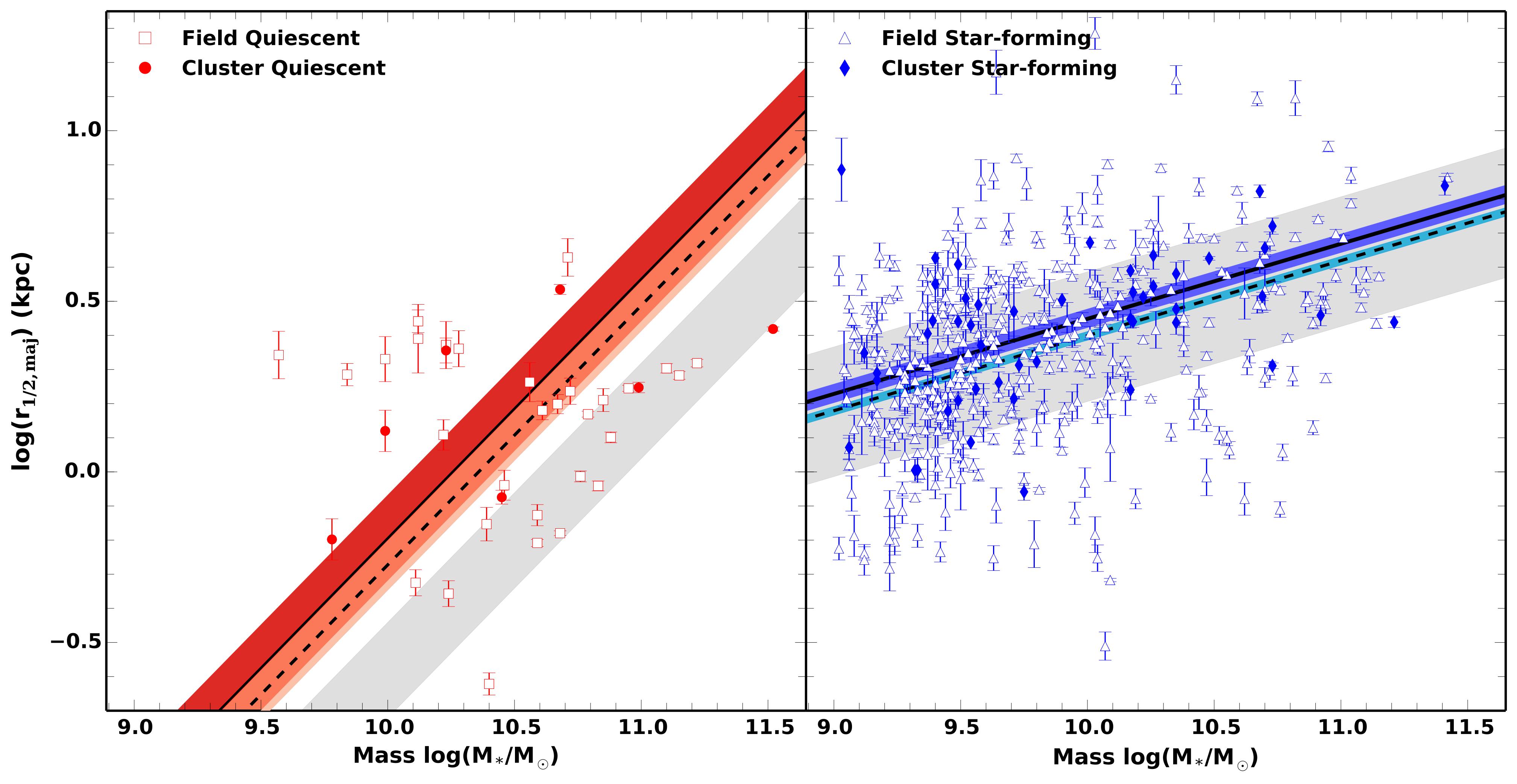 Allen et al. 2015 Summary: To investigate the differences in star-forming and quiescent galaxy properties as a function of environment at z=2.1, we create a mass-complete sample of 59 cluster galaxies (Spitler et al. 2012) and 478 field galaxies with log(M/M)>9 using photometric redshifts from the ZFOURGE survey. We compare the stellar mass-size relation of field and cluster galaxies using measured galaxy semi-major axis half-light radii from the HST/WFC3 F160W size catalogs of van der Wel. et al 2012. We find consistent mass normalized sizes for quiescent field and cluster galaxies. The mass normalized size of star-forming cluster galaxies is 12% larger than star-forming field galaxies.
Allen et al. 2015 Summary: To investigate the differences in star-forming and quiescent galaxy properties as a function of environment at z=2.1, we create a mass-complete sample of 59 cluster galaxies (Spitler et al. 2012) and 478 field galaxies with log(M/M)>9 using photometric redshifts from the ZFOURGE survey. We compare the stellar mass-size relation of field and cluster galaxies using measured galaxy semi-major axis half-light radii from the HST/WFC3 F160W size catalogs of van der Wel. et al 2012. We find consistent mass normalized sizes for quiescent field and cluster galaxies. The mass normalized size of star-forming cluster galaxies is 12% larger than star-forming field galaxies.
To complement our study of the stellar mass-size relation of these galaxies we compare the observed colors (HST F814W-F160W) of individual field and cluster galaxies. We find that star-forming cluster galaxies are on average 20% redder than star-forming field galaxies at all masses. Furthermore, we stack galaxy images to measure average radial color profiles as a function of mass.
Our results suggest, given the observed differences in size and color of star-forming field and cluster galaxies, that the environment has begun to influence/accelerate their evolution. However, the lack of differences between field and cluster quiescent galaxies indicates that the environment has not begun to significantly influence their evolution at z~2.”
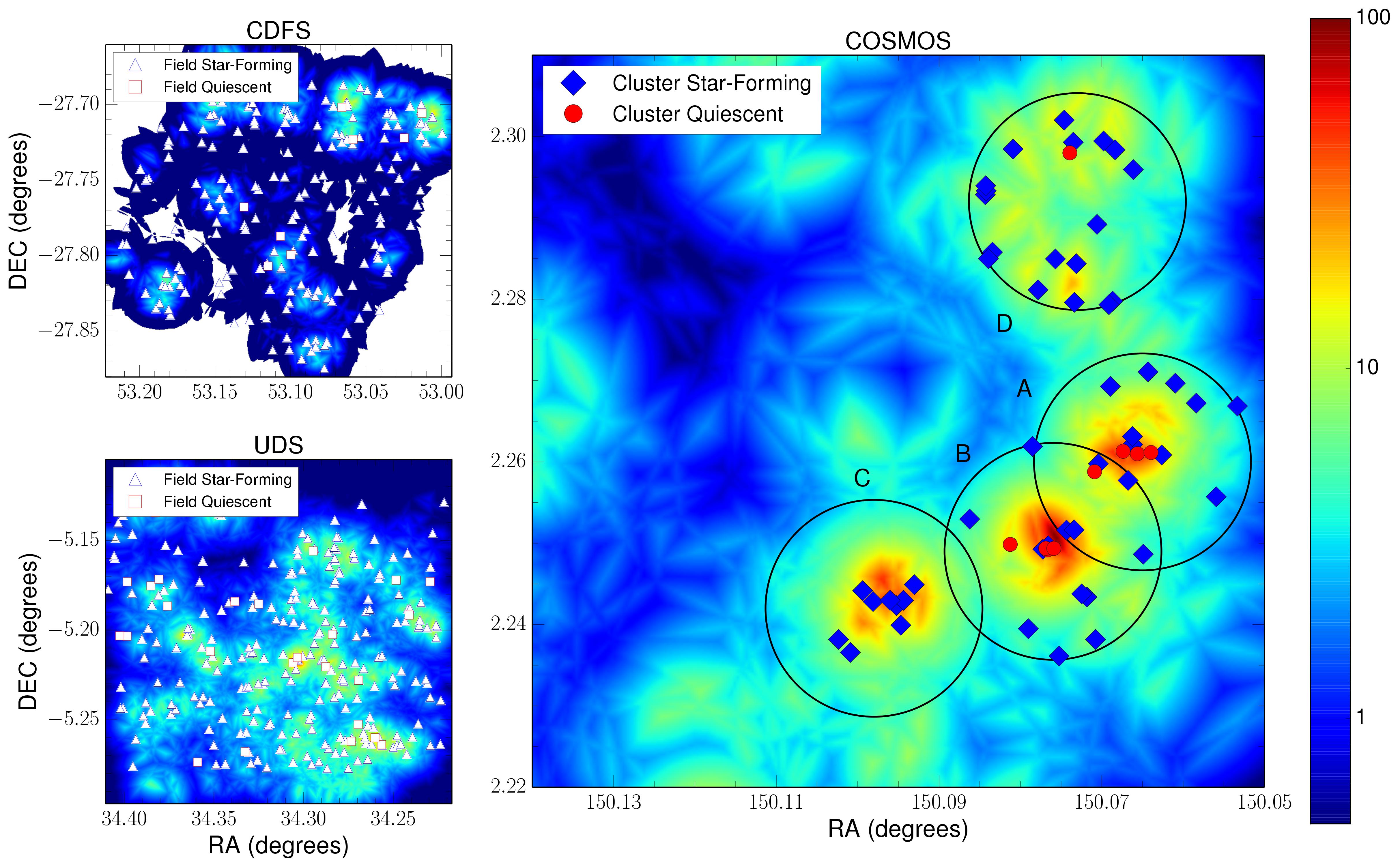 The 7th nearest neighbor density projected density maps of COSMOS, CDFS, and UDS. Our cluster sample is constructed using the over-densities identified in the COSMOS field by Spitler et al. 2012. Our field sample is drawn from the UDS and CDFS fields at the same redshift, where no significant over-densities are present.
The 7th nearest neighbor density projected density maps of COSMOS, CDFS, and UDS. Our cluster sample is constructed using the over-densities identified in the COSMOS field by Spitler et al. 2012. Our field sample is drawn from the UDS and CDFS fields at the same redshift, where no significant over-densities are present.
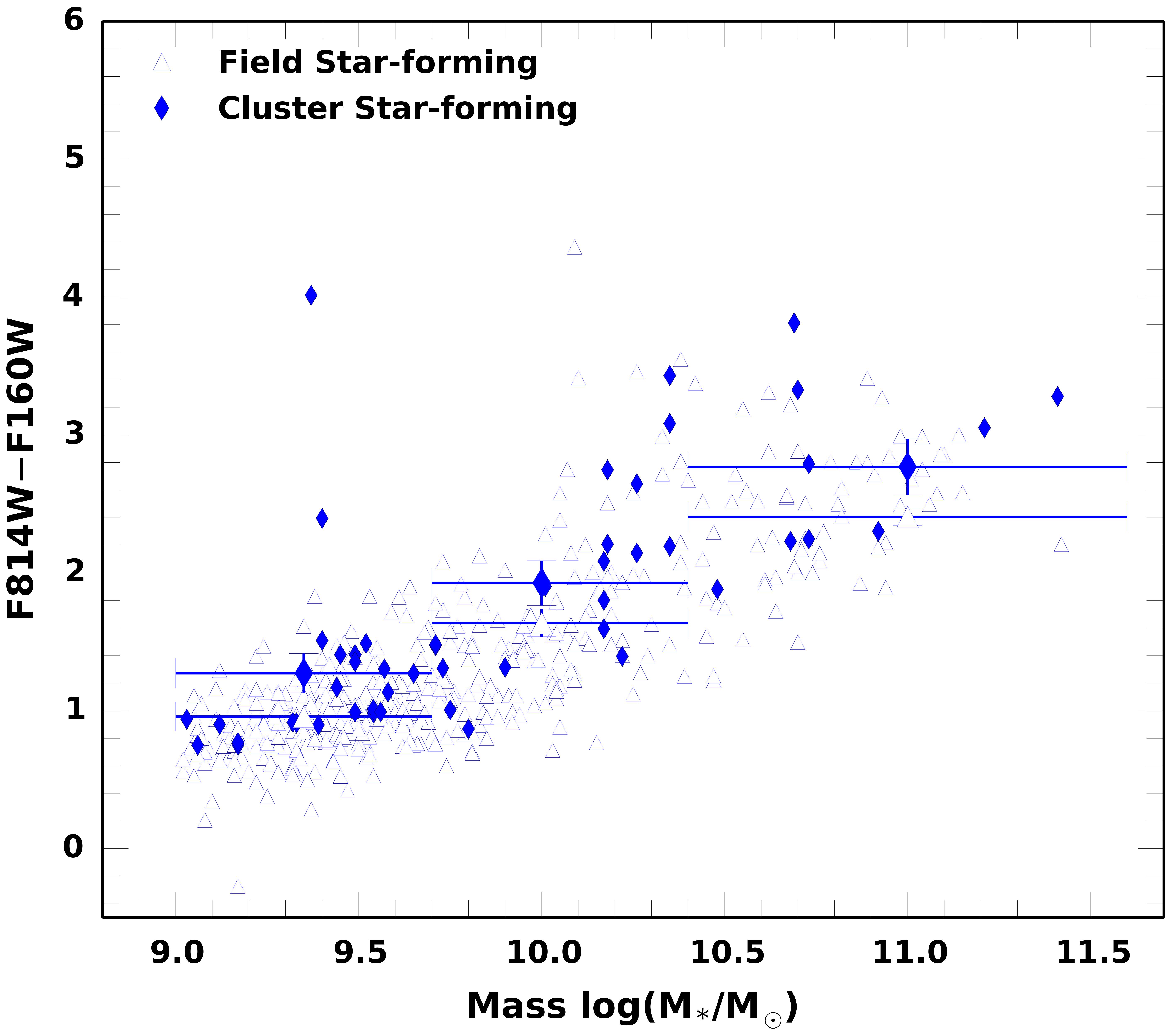 We compare the observed colors of field and cluster star-forming galaxies, in addition to the comparison of their average sizes. We find that the average colors of cluster star-forming galaxies are 20% more red than their field counter-parts at all masses.
We compare the observed colors of field and cluster star-forming galaxies, in addition to the comparison of their average sizes. We find that the average colors of cluster star-forming galaxies are 20% more red than their field counter-parts at all masses.
